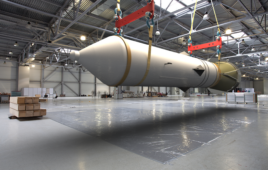A new global weather system is set to improve local forecasts around the globe, created by IBM and its subsidiary The Weather Company.
Announced at CES 2019, the system is called the IBM Global High-Resolution Atmospheric Forecasting System (GRAF), and “will be the first hourly-updating commercial weather system that is able to predict something as small as thunderstorms globally,” according to IBM. Traditional systems have an update window of 6 to 12 hours.
IBM estimates GRAF will offer a “200 percent improvement in forecasting resolution for much of the globe (from 12 to 3 sq km)” when compared to existing prediction models used by many worldwide, which cover 12 to 15 km of land.
Below you can view a side-by-side forecast comparison (Figure 1) of a monsoon that hit India in August 2018. The left image shows an existing system that works at 13-km resolution, while the right features GRAF’s 3-km resolution with hourly updates.

Figure 1: A side-by-side forecast of a monsoon that hit India in August 2018, comparing an existing system (left) with GRAF (right). (Image Source: IBM)
“Today, weather forecasts around the world are not created equal, so we are changing that,” says Cameron Clayton, general manager of Watson Media and Weather for IBM. “Weather influences what people do day-to-day and is arguably the most important external swing factor in business performance. As extreme weather becomes more common, our new weather system will ensure every person and organization around the world has access to more accurate, more finely-tuned weather forecasts.”
The system bypasses the lack of equipment from many regions by utilizing aircraft sensor data. This technique can also give people a chance to improve local weather forecasts themselves, since “it will be able to make use of pressure sensor readings sent from barometers found within smartphones if people opt-in to sharing that information,” according to IBM.
GRAF will leave its data analysis up to IBM POWER9-based supercomputers.
The system will be available globally sometime in 2019.
Filed Under: Aerospace + defense, Sensors (pressure)




